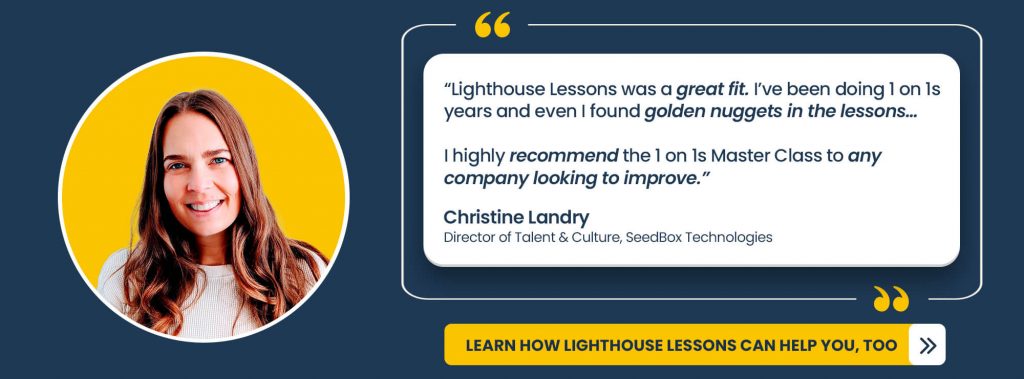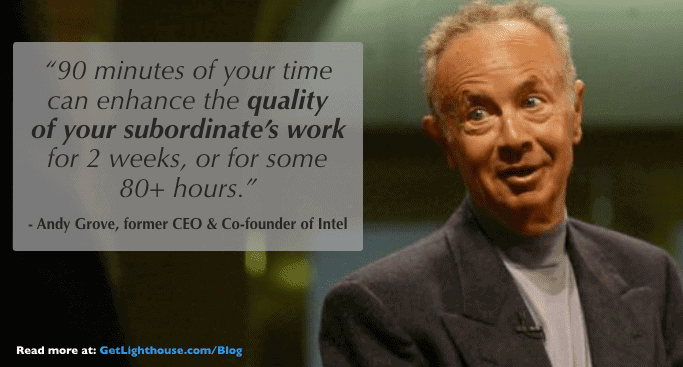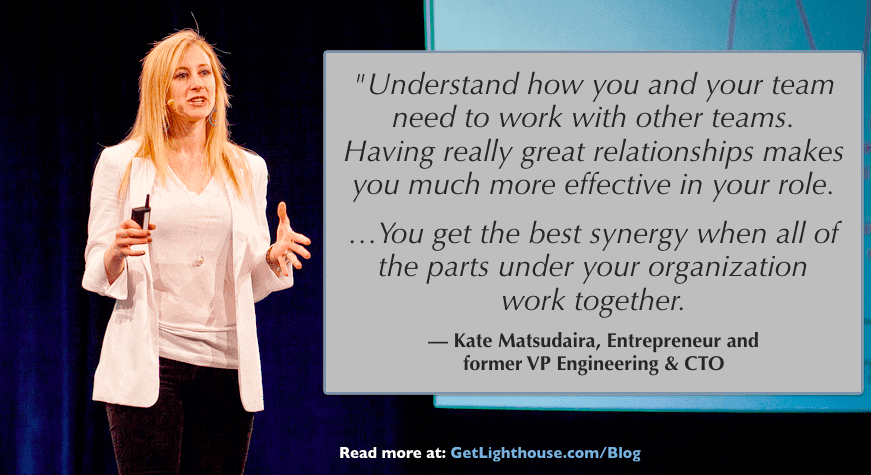What are 1-1 meetings? Why do they matter? How do you make the most of them?
These questions and more were the topics of discussion on the great podcast Jason Evanish, CEO of Lighthouse, was interviewed on, PM for the Masses, by Cesar Abeid.
They covered a ton of ground in the interview that can help managers of all types take advantage of the power of 1-1 meetings.
Take a listen below, and to help you make the most of it, we broke down the key points discussed with links to further reading, and the charts we talk about during the show. Enjoy!
Key Takeaways on the Power of 1-1 Meetings on the PM for the Masses Podcast
Since a picture is worth a thousand words, below are some of the best takeaways, and visuals we referenced as you listen to the podcast. We also have tons of links for further reading. Any topic you want to learn more about is a click away.
Have questions or follow up thoughts on what you hear? Leave a comment and we'll be sure to answer it or integrate it into our recap here.
1) What are 1-1 meetings?
As Jason described it on the show 1-1 meetings, "are a meeting between two people (and only two people) to talk about things normally there isn't time to talk about with that person." This can be used in many different ways to your benefit:
For managers, 1-1 meetings are an essential part of having an engaged, motivated team.
You can use these meetings to improve your working relationship, give and receive feedback, discuss ideas, help them with career growth and a lot more. (Check our one on one meeting template)
For those not managing a team, or if you also work with a few key peers, 1-1 meetings can have additional importance and value.
These meetings, called peer 1-1s, give you a chance to deepen your working relationship with key teammates, address issues, discuss ideas for improving collaboration, and more. (Learn more about peer 1-1s here as well as specifically for PMs here.)
Regardless of the type of leader you are, the most important thing to remember is we're humans, not robots. Treating people with respect, showing genuine interest in who they are as a person, and making time to talk with them demonstrate your care as a leader.
2) Build up your emotional savings account with your team and colleagues
Jason shared a story on the podcast about how his father looks at the relationships with his staff. They have an average tenure of over 17 years each because of things like the "emotional savings account" his father invests in.
His father's philosophy is that every time you do something to build trust, show appreciation, or otherwise demonstrate you care about and value them you make a deposit to your emotional savings account with them.
Then, when things get tough, you can make withdrawals safely. Your team's buy in and respect helps you get them to take on difficult or boring tasks, be more accepting of difficult changes (like pay cuts, no raises, layoffs), or listen to your feedback.
It can be hard to find time serendipitously to invest individually in your people to build up your emotional savings account with them. 1-1 meetings are a great way to make sure you have time to do so.
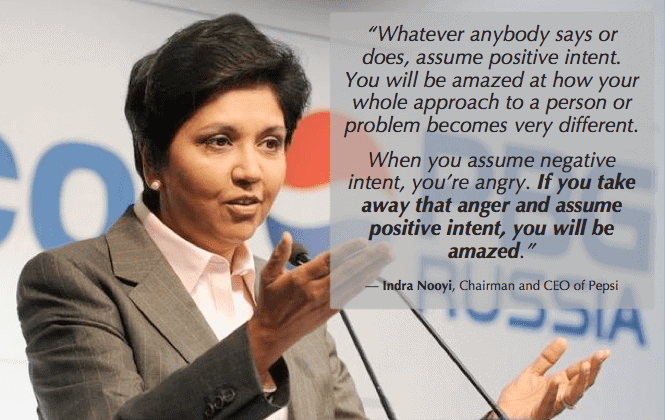
Assume positive intent
When you build rapport with your team, or invest in their emotional savings account, you're changing how your team thinks and feels about you.
As Caesar mentioned, a simple act of showing a funny photo to a colleague cut the tension in a difficult meeting. He would have never been able to do that if he didn't get to know them and the name of their pet.
As important, when you get to know someone, you're more likely to give them the benefit of the doubt. If your friend accidentally bumped into you in a crowded bar, you probably are annoyed but understand.
However, if a stranger bumps you, and you spill your drink, you likely immediately think they're a jerk. Getting to know your team will help you stay calm and understanding when things don't go well.
Finally, remember: you're no angel; we all make mistakes.
Having the benefit of the doubt from your colleagues can be the difference between someone lending you a hand, and turning their nose up at you. It can also help you have more essential supporters when navigating the inevitable politics in your organization.
Note sure where to start in trying to build more trust with others? Try these:
- Here's why experts agree building rapport is so important
- Learn 81 different ways you can connect with anyone regardless of age, gender, or background.
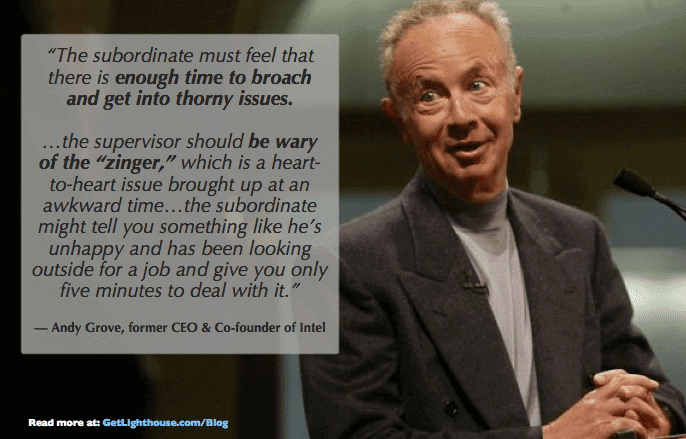
3) How often should you have 1-1 meetings?
If you're new to 1-1 meetings, or they didn't work out the last time you tried them, you may be unsure how often to have them. We've helped hundreds of managers and found a few best practices that can help you.
For 1-1 meetings with your team:
- Meet every 1-2 weeks with everyone on your team depending on the size of your team (bigger teams create a calendar crunch).
- Thinking once a month is enough? Here's why we disagree, and think quarterly would be even less useful.
For 1-1 meetings with your peers:
- Consider how much happens you need to coordinate with your peer. If you (or your teams) constantly collaborate, every 2 weeks is the best way to ensure you fix problems when they're small, instead of having to triage.
- For those you work with less frequently, or already have a great, existing relationship, every 3-4 weeks can work very well. Adjust as you find what works.
And for your brand new team members and those you're struggling with:
- New team members are going to have a lot of questions, and you should be asking them a lot, too. That means weekly 1-1 meetings are a must to ensure they have everything they need, and to build a solid foundation for your working relationship. Take a look at some of the greatest questions to ask employees when you are a new manager.
- If you have an underperformer you're trying to turn around, or someone you're having a hard time working with, lean into the challenge. Meet weekly until things are in a good place again. It shows your commitment to fixing the issues that exist, and gives a tight turn around for progress from what you discuss.
What about the length of my 1-1 meetings?
Now that you know how often to schedule your 1-1 meetings, remember to keep in mind the length of the meeting. Your best bet is to always set aside an hour.
Remember: it's much easier to end a meeting early, than it is to run long if you have a busy schedule.
Also, as Andy Grove's quote above highlights, it can often take time to warm up in a meeting. After the warm-up you need time to tackle any surprise "zingers." The last thing you want is to hear something critical as your phone is buzzing for your next meeting.
Not sure what you'd talk about in your 1-1 meetings? Start here:
- Here's some of the best topics to discuss in your one on ones.
- Meeting with a manager that reports to you? Here are some good questions to ask a manager.
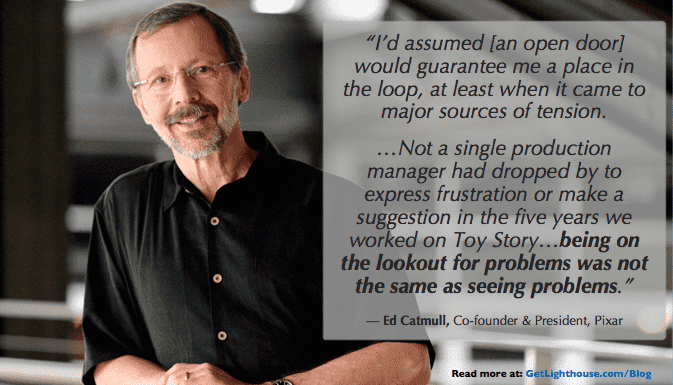
4) What are common mistakes to avoid in 1-1 meetings?
Unfortunately, some managers try 1-1 meetings and give up. They never feel the incredible value, so feel like it's too expensive a time on their calendar.
Typically, this happens because they made the most common mistake that wreck 1-1 meetings: wasting them on Status Updates.
It's hugely inefficient for 2 people to meet to talk about a project that affects dozens of people. You end up playing telephone to relay messages to all the people not in the room. Or, you end up reading things aloud that could have been discussed over email or chat.
Use 1-1 meetings for discussing what matters
Instead of status updates, focus on what you normally don't have time to talk about:
- How a project is going: blockers, interpersonal issues, smooth/bumpy handoffs, deadlines slipping, etc.
- Shop ideas: what if we..., what do you think we could..., how would you... are all great ways to start a discussion.
- Build the relationship: build that emotional savings account up.
- Talk about their career goals: tapping into people's passions, aligning goals to project work, and helping them feel progress in their career is hugely motivating.
- Give and receive feedback and praise: It's often what goes unsaid that's the biggest problem. Make sure people know what you appreciate and what causes problems.
The key to all of this is to be prepared. Taking the time to plan out topics to discuss, even if for only 5-10 minutes before the meeting can make a huge difference.
For those you don't meet with often, keep a running list of topics as you think of them. You may be surprised how many things come to mind over the course of a month.

5) How much rapport building, small talk, and laughter should we have in 1-1 meetings?
We talked a lot about the value of building rapport in the podcast, which could have you wondering, "how much is too much?"
If you're a little nervous about it, that's okay. As Camille Fournier says in the quote above, showing some interest in your colleagues makes all the difference, but it's not your full time job.
You don't need to and shouldn't spend all your time on rapport and small talk. It should be one key part (usually the beginning) of great 1-1 meetings.
As you get more used to building rapport with your team watch out for these:
- The super-shy: They will be like pulling teeth to connect with, but the payoff is huge. Bring a few questions to ask and keep trying until you find something they open up on. Stick to what they seem comfortable discussing.
- The talker: On the opposite end of the spectrum, there are people that would happily talk for hours about their personal life if you let them. Be a good listener and show you're interested, then transition after 5-10 minutes to another topic.
Most importantly, the majority of your team will be glad you asked. You'll be surprised how you can quickly change the relationships and morale of your colleagues by showing interest in them.
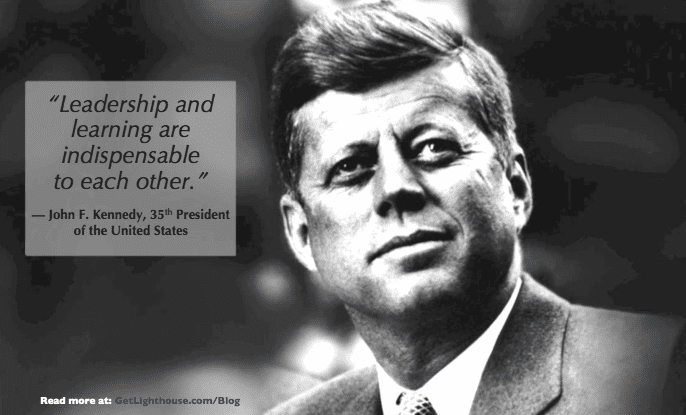
Further reading on other topics discussed
We spent a lot of time discussing the importance of rapport and humanizing your relationships through great 1-1 meetings today. However, there's a lot more to talk about in these critical meetings.
Here's a few good additional topics and further reading on them:
- Here's how to talk about their growth and development.
- Giving feedback and working through issues is a great use of time.
- Praising people is one of the easiest ways to motivate your team, and make sure you see more of it.
And if you're starting 1-1 meetings from scratch, this can give you step by step instructions how to tell your team, schedule the meetings, and more.
Are you and your managers wasting their 1 on 1s?
There is no greater investment to make in your team than having 1 on 1s. Yet, done poorly they’re a huge waste of time.
That’s why we made the 1 on 1 Master Class. You and your fellow managers learn step by step how to supercharge these meetings to motivate your teams, fix problems, coach your people, and much more.
You can learn how Lighthouse Lessons can help your leaders like we helped SeedBox Technologies by signing up here.
